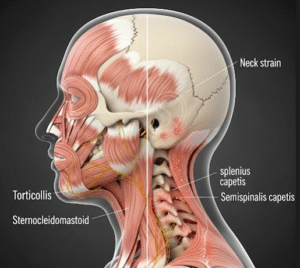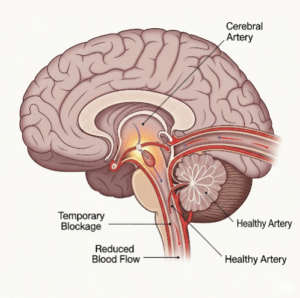Overview
Trigeminal Neuralgia (TN) is a chronic pain condition affecting the trigeminal nerve, one of the largest nerves in the head responsible for sensation in the face. TN is characterized by sudden, severe, stabbing facial pain that can last from a few seconds to several minutes, often triggered by routine activities such as talking, chewing, or touching the face. Although TN is rare, it can significantly affect quality of life. In South Korea, neurologists and pain specialists offer advanced diagnostic tools, medical management, and surgical interventions to control symptoms, prevent complications, and improve patient well-being.
What is Trigeminal Neuralgia?
Trigeminal Neuralgia is a neurological disorder in which the trigeminal nerve becomes irritated or compressed, leading to episodes of intense facial pain. It is sometimes called “tic douloureux” due to the involuntary facial twitching that may accompany pain attacks. TN can affect one or both sides of the face, although unilateral involvement is more common. The condition is often classified as classical (caused by blood vessel compression) or secondary (associated with other neurological disorders such as multiple sclerosis or tumors). South Korean specialists employ MRI and high-resolution neuroimaging to identify underlying causes and guide treatment strategies.
Symptoms
Symptoms of trigeminal neuralgia typically include:
- Sudden, severe, stabbing, or electric-shock-like pain on one side of the face
- Episodes lasting from a few seconds to two minutes, often in clusters
- Pain triggered by everyday activities, including eating, speaking, brushing teeth, or touching the face
- Tingling or burning sensations preceding pain attacks (aura)
- Involuntary facial twitching or grimacing during pain episodes
- Increased frequency and intensity of attacks over time
- Emotional distress, anxiety, and difficulty performing daily activities due to fear of triggering pain
Because TN symptoms mimic dental or sinus issues, accurate diagnosis in South Korea often involves neurologists collaborating with dentists and ENT specialists.
Causes
The exact cause of TN varies depending on the type:
- Classical TN: Compression of the trigeminal nerve by an adjacent blood vessel, often the superior cerebellar artery, causing nerve irritation
- Secondary TN: Resulting from underlying neurological conditions such as multiple sclerosis, tumors, or structural lesions
- Post-traumatic or post-surgical causes: Nerve injury from facial trauma or surgical procedures
- Idiopathic TN: Cases with no identifiable cause
Korean neurologists utilize advanced imaging techniques to pinpoint compression or structural causes and tailor individualized treatment plans.
Risk Factors
Several factors increase susceptibility to trigeminal neuralgia:
- Age, particularly adults over 50 years
- Female gender, which has a slightly higher prevalence
- Multiple sclerosis or other demyelinating disorders
- Facial trauma or prior dental or facial surgery
- Vascular anomalies causing nerve compression
Early detection and risk factor assessment in Korea help prevent misdiagnosis and facilitate timely intervention.
Complications
Trigeminal neuralgia, if untreated or poorly managed, can lead to significant complications:
- Chronic pain impacting daily life, sleep, and mental health
- Emotional distress, depression, or anxiety due to persistent pain
- Nutritional issues from avoiding chewing or eating to prevent pain attacks
- Social withdrawal and reduced quality of life
- Potential side effects from prolonged medication use if not properly monitored
Korean pain management centers focus on reducing both physical and psychological impacts through comprehensive care.
Prevention
While trigeminal neuralgia cannot always be prevented, certain strategies may reduce risk or severity:
- Regular monitoring for neurological conditions that may predispose to TN
- Prompt treatment of facial trauma or infections
- Stress management and avoidance of triggers that exacerbate pain
- Early intervention in patients with vascular compression or multiple sclerosis
- Educating patients about facial hygiene and careful oral care to prevent pain triggers
Public health initiatives in South Korea emphasize awareness, early recognition, and patient education.
Treatment Options in Korea
Treatment for trigeminal neuralgia in Korea combines medical therapy, minimally invasive procedures, and surgery:
Diagnosis:
- Comprehensive neurological examination
- High-resolution MRI or MR angiography to identify vascular compression
- Electrophysiological testing if needed to evaluate nerve function
- Assessment of pain patterns, triggers, and severity
Medical Treatments:
- Anticonvulsants: Carbamazepine or oxcarbazepine as first-line therapy to reduce nerve excitability
- Other medications: Gabapentin, pregabalin, or muscle relaxants for adjunctive pain control
- Pain management: Analgesics and local anesthetic blocks for temporary relief
Surgical and Minimally Invasive Options:
- Microvascular decompression: Relieves nerve compression by repositioning or cushioning the offending blood vessel
- Radiofrequency ablation: Destroys affected nerve fibers to block pain signals
- Stereotactic radiosurgery: Focused radiation to selectively target the trigeminal nerve
- Balloon compression or glycerol injection: For patients unsuitable for major surgery
Supportive Care:
- Patient education on identifying and avoiding triggers
- Psychological counseling to address anxiety, depression, and quality-of-life concerns
- Multidisciplinary follow-up involving neurologists, pain specialists, and rehabilitation therapists
Korean hospitals and specialty centers integrate advanced diagnostics, expert surgical care, and multidisciplinary support to optimize outcomes for patients with trigeminal neuralgia.













